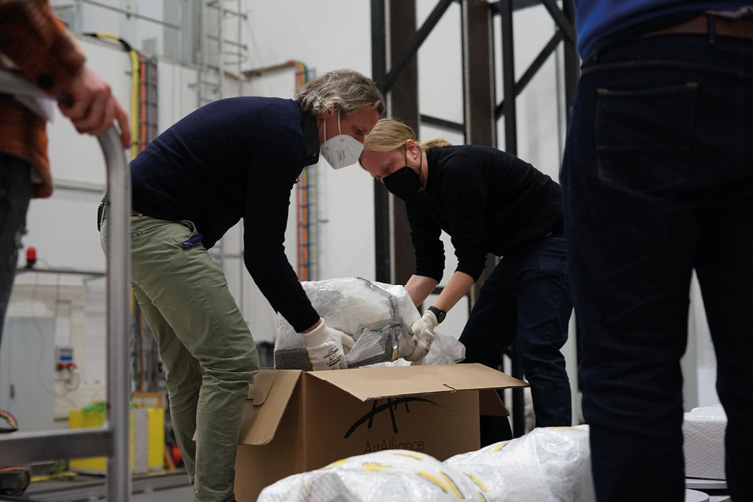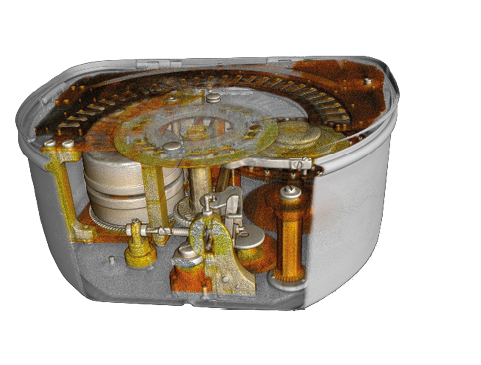The final secrets of encryption machines
Their inner workings are among the best-guarded of secrets – after all, the machines themselves were all about secrecy. We are talking about encryption machines, with which the military and secret services but also banks encoded their messages. Last year, 60 of these encryption machines from the collection of the Deutsches Museum were studied using a particularly powerful X-ray machine. The Enigma machine used by the Nazis and its less well-known successor, Cipher Machine 41, were among the items scanned at the Development Center for X-ray Technology EZRT at Fraunhofer IIS in Fürth.
“We expect that this research project will yield new findings about the construction of the encryption machines and how they work,” says cryptography curator at the Deutsches Museum, Carola Dahlke. “The Enigma has been quite thor-oughly researched, but other encryption machines simply cannot be opened without damaging them.” Machines from the early days of computers in particular have revealed a lot of mysteries. Their designers wanted of course to shield the inner workings of the machines from the eyes of unauthorized people. “Some encryption machines are welded shut or even filled with a mysterious substance that ensures that the inner workings of the machine are destroyed when the casing is opened,” Dahlke says.
But thanks to state-of-the-art technology at Fraunhofer EZRT in Fürth, it is possible to study the inner workings of these devices nonetheless.

The XXL scanner at EZRT somewhat resembles a CT scanner in a hospital – except that the XXL scanner does not have a giant tube that rotates around a patient, rather the object is placed on a turntable that rotates while the X-ray source stays fixed in its place. And the X-ray source is also much stronger than in a medical device. “That’s necessary because the objects are largely made of metal and difficult to penetrate for conven-
tional X-ray tubes,” explains Nils Reims, head of the 3D-Cipheram project at the Fraunhofer Development Center for X-ray Technology EZRT. This allows the last mechanical mysteries of the top-secret encryption machines to be brought to light.
